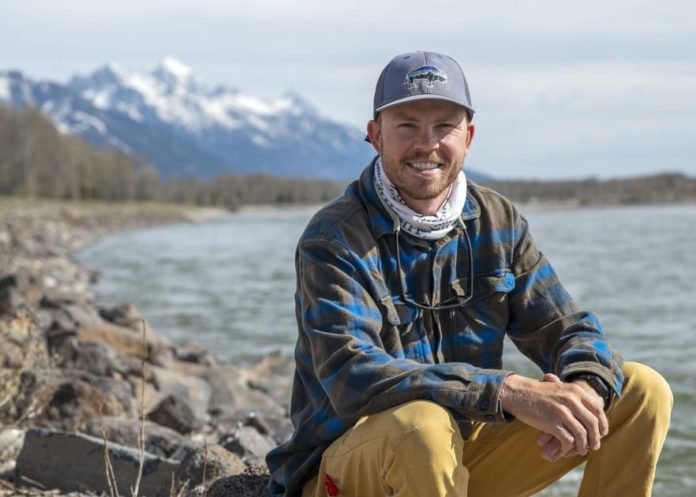Dakota Richardson has floated the same 10 miles of the Snake River so many times you’d think he would have it memorized.
But that’s part of the attraction of river running: The river may be “the same” much of the time and in many ways, but the float is never completely the way it was before, never in all aspects.
“It’s my favorite stretch of river,” the fishing guide said of the Snake from Deadman’s Bar to Moose. “It’s a dynamic environment. … You have to relearn the river every year.”
It’s so much a favorite that Richardson wrote about it recently in a piece called “Deadman’s to Moose.” It’s about a day he guided a lady who had fished the Snake for decades.
It’s a lot of water, Richardson wrote, but big and fast doesn’t mean guaranteed good fishing.
Between the steep gradient, the swift current and the maze of uprooted trees, the efficient trout water was scarce, unlike other sections where long sweeping runs of lazy current could hold fish anywhere. Deadman’s to Moose was difficult enough to just navigate through the braided channels of shifting rock bars and downed trees, and the fishing was even more difficult. Quick casts into toilet bowl-size buckets of calm water and swirling eddies — all while keeping your line from dragging the fly too quickly from the strike zone — were required.
He calls fishing the Snake a game of “rowing the ‘maze.’”
Richardson’s article was recently honored by the Wyoming Arts Council, which chose him to receive the Neltje Blanchan Memorial Writing Award, named after the Sheridan-area artist who died a few weeks ago.
Richardson likes combining the outdoors and writing about what he and other people do when they are out there, and how they react to it, how it changes them.
Richardson was born in Connecticut, where his mom and dad run a landscaping firm. With a father and grandfather who loved fishing, Richardson could hardly avoid finding himself on the ocean or along streams and rivers from a young age. The urge to write about it also came early.
“I love reading fishing magazines,” Richardson said, “and I was writing fishing stories when I was 15, 16.
“I wanted to travel around and write fishing stories, take a lot of photographs.”
Richardson had his first guide gigs when he was no more than 16, and school also offered encouragement. He attended the private Berkshire School, where students could invent classes of their own. With help from a friendly teacher he came up with a stream ecology program that let him indulge his love of fishing and the environment and writing — “and it counted as part of my curriculum.”
Richardson continued his education at New York University, studying journalism and economics. He also learned another important lesson: Living in New York City might be interesting for a while, but it wasn’t what he had in mind for his life.
Out of school, Richardson scouted guide jobs in the West. A grandmother had started life in Montana, and family trips had let Richardson fish the Madison and the Big Horn.
“Every summer we would load up the station wagon and head to Maine or Montana, so fishing was ingrained in me from a young age,” Richardson said. “Not the Snake, but in the area.”
And he had flown into Jackson and “saw antelope and moose right outside the airport, and that stuck with me,” so he looked around here for work.
He figured it might be difficult to get a start, but his inquiries began just when Triangle X needed someone. He was hired in 2015. They pointed him to a drift boat and he was off.
The season has already begun this year, but it’s at its busiest from June to September — last July he led 42 trips. In winters Richardson has guided snowmobile trips for Togwotee Mountain Lodge and done some fishing guide work elsewhere around the country. Along the way he catches not only fish but stories.
Everything he writes, Richardson said, “is informed by the natural world.” For style he finds examples in Thomas McGuane, who wrote “Ninety-Two in the Shade,” and in the 20th century’s premier example of a writer with an outdoor bent: Ernest Hemingway.
In “The Old Man and the Sea” and “Big Two-Hearted River” Hemingway was at the peak of his outdoors work. And his way of writing — the short statements, the directness, the “truth in every sentence” — are what Richardson admires.
His writing and photos have appeared in Catch Magazine, The Fly Fish Journal, The Drake and The Fisherman.
Besides his own love of the wild, Richardson has found not a little satisfaction in showing it and explaining it to his clients. You’d think anglers might know something about the natural world, but Richardson has met more than a few whose fishing life is almost entirely “catch fish, take photo.” He does the usual explaining about how elk drop antlers but don’t die, the cutthroat here aren’t stocked but are the indigenous descendants of fish that go back a million years, you probably don’t need a Rambo-style tactical knife, that’s a moose, the river doesn’t run in a circle — the usual city folk stuff.
“This is about the most natural setting you’ll find in this day and age,” Richardson said of Jackson Hole, “and it’s funny how far people are removed from the natural world.
“A lot of these people don’t get outside a ton, and I like telling them how the world works.”
Credit: Source link































